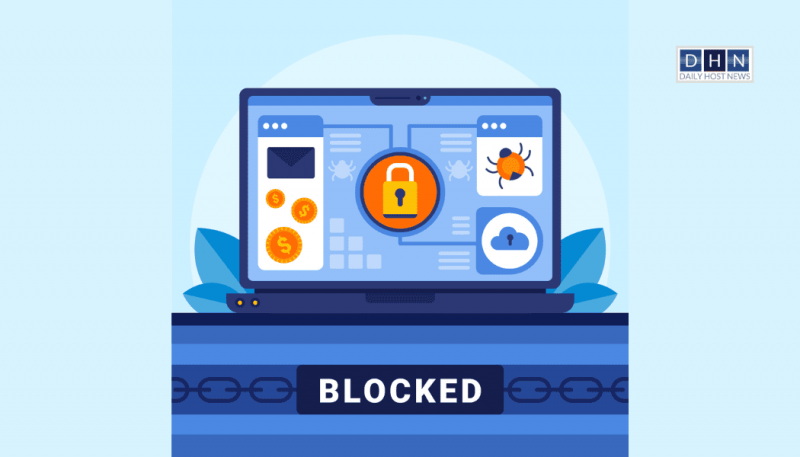“Imagine your most personal, sensitive data suddenly held hostage. Imagine the feeling of desperation, helplessness, uselessness.” Launched into the scene with an immediate taste of reality, Philipp Pratt, Innovation Expert at Geonode, sets the tone for the somber truth around yielding to ransomware attacks.
Understanding Ransomware – A Silent Threat
A menacing form of malware, ransomware infiltrates systems, encrypts data, and demands payment, usually in cryptocurrency, for its release. This digital hostage-taking leaves individuals and organizations reeling, their personal or professional lives hanging in the balance.
Decoding the chaos, Pratt shares, “The perpetrator uses encryption algorithms undecipherable without a key, controlled only by them. Essentially, they make your data inaccessible, then demand a ransom in return for the key.” Without the key, users see their digital lives transferred into a succinct balancing act between paying an exorbitant ransom and losing their critical data forever.
The Staggering Impact of Ransomware:
- Financial losses from disruptions to business operations
- Cost of recovering systems and files
- Potential legal costs from inability to deliver services or secure customer data
- Damage to an organization’s reputation due to loss of customer trust
The Damming Dilemma – To Pay or Not to Pay
Paying the ransom might seem like the quickest path to reclaim your data, but it’s a double-edged sword. Pratt warns that “Paying off your digital captors doesn’t provide a guarantee for getting your data back. More worrying, it funds their ongoing criminal activities, potentially incentivizing more attacks.” Recurring attacks are also prevalent among victims that paid the ransom previously.
Some businesses that become victims of ransomware are hit by a twofold blow:
- Operational Impact: The crippling effect on daily operations. It’s like your business hits a brick wall – you can’t move until you’re free from the attacker’s grip.
- Financial Fallout: The vast sums of money lost from responding to the attack, potential ransom payment, and lost revenue from disrupted operations.
Pratt emphasizes the predicament victims find themselves in. “Ransomware is a cyber beast that preys on fear and desperation, seducing victims into a trap where surrender seems the only way out”.
The Perilous Pitfall: Paying the Ransom
The immediate reaction to a ransomware attack might be to just pay the ransom. The MIT Sloan emphasized that the underlying target is of significant worth, and quick recovery seems of utmost importance. Yet, yielding to the demands of the adversaries comes with its own share of painful truths:
- The Payment Guarantee Fallacy: The hackers do not give any assurance that you will regain access to your files once the ransom gets paid. It is not uncommon for victims to pay, and still remain locked out of their own data.
- You are Tagged ‘An Easy Target’: Paying once makes you an attractive ‘repeat target’. Hackers know you are capable and willing to pay, making you an alluring prospect for future attacks.
- Funding Cybercrime: Every payment made to these cybercriminals fuels their operations, creating a vicious cycle of cybercrime that proves difficult to break.
Referencing expert counsel from Pratt, “ Yielding to ransomware demands is a high-risk game that many are destined to lose. The moment we succumb, we enable a toxic ecosystem of cybercrime to thrive.”
Prevention – Your Best Defense
Equipping yourself with necessary safety measures can keep you from becoming a ransomware victim.
Philipp’s tips on preventative measures include:
- Backup Regularly: Ensure that all your important data is backed up in a secure location that’s not directly connected to your main network.
- Stay Updated: Regularly update your operating system, software, and applications to prevent attackers from exploiting any vulnerabilities.
- Implement Multi-Layer Security: Use robust cybersecurity tools that provide a comprehensive defense against various types of malware, including ransomware.
- Educate and Train Staff: In an organization, employees are the first line of defense. Regularly training can help them spot fraud attempts before they wreak havoc.
- Deploy Network Segmentation: By segregating networks, you can contain an attack and prevent it from spreading throughout the entire network.
- Beware of Emails: Phishing emails are a common way ransomware is spread. Be cautious with all emails, particularly those with attachments or links.
Take Control of Your Digital Destiny
“The objective shouldn’t just be to survive the digital age but to thrive in it.” Pratt urges. As we venture further into an era dominated by technology, we must become proactive protectors of our digital sovereignty. Making informed decisions about how and where our data is stored, staying vigilant to potential threats, and maintaining robust lines of defense – these must be our guiding principles in this ever-evolving digital landscape.
Ransomware victims face a brutal journey of data loss, financial damage, and emotional distress. But you don’t have to be part of that statistic. Take the reins and stay ahead of the hackers by equipping yourself with knowledge and tools that can fortify your digital fortress, ensuring your journey in the digital realm is a safe and constructive one. Ultimately, remember, you hold the key to your own digital destiny.
Featured image credits: Freepik
Read next: DDoS attacks up 63% in 2023 as hackers use more advanced DDoS techniques than ever – StormWall
The post When hackers strike: Exposing the painful truth about yielding to ransomware appeared first on Daily Host News.









